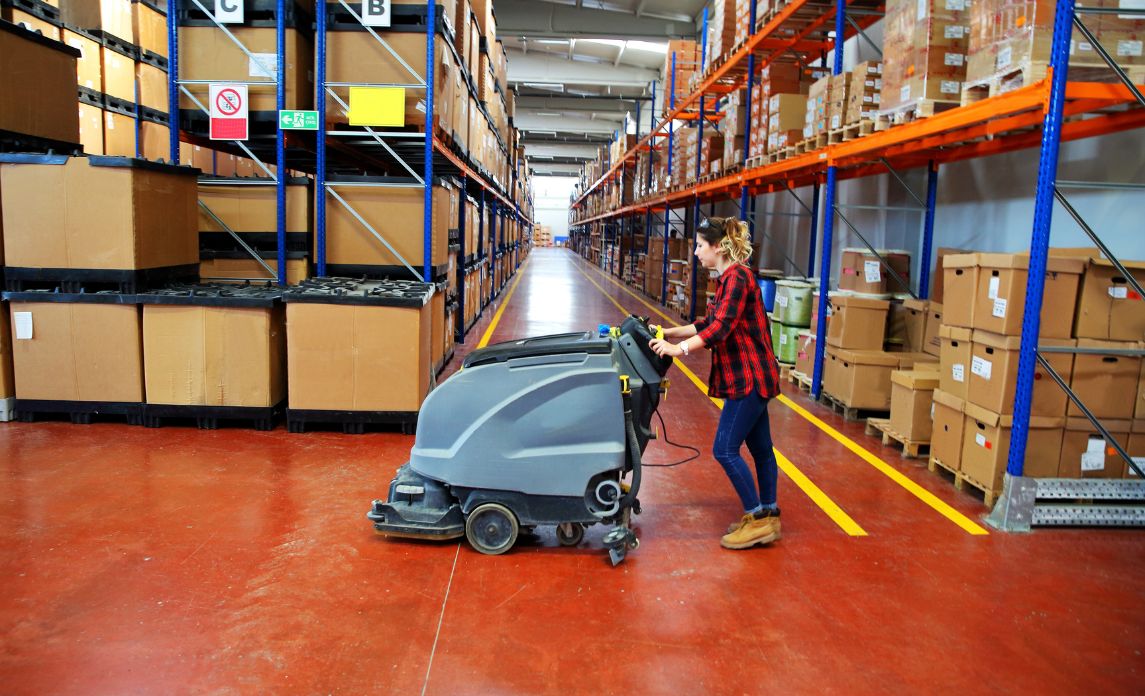There are many seemingly non-business-related activities that are in fact crucial to smooth daily operations. For example, those businesses that require a warehouse to store apparatus, inventory, and other items also need to keep the said space clean.
A clean and organised warehouse helps ensure productivity, efficiency, and accuracy. What’s more, it also promotes safety by reducing the risk of accidents like trips, slips, and falls that can cause both personal injury and damage to property.
Finally, proper warehouse maintenance can prolong the life of equipment. This can then result in cost savings, particularly when it comes to repairs and replacements.
That being said, warehouses come with a different set of cleaning challenges. The amount of space alone can be difficult to handle by in-house staff, which is why the best thing to do is usually to hire professional office cleaners like CrewCare.
However, there are still some key things that business owners and warehouse managers can do to keep their warehouses clean and organised. Below are some of these best practices, which can aid in warehouse maintenance whether you hire commercial cleaning companies or otherwise.
Prepare a Cleaning Schedule
Cleaning a huge space like a warehouse can be difficult to accomplish without a plan. This is especially true if your warehouse also hosts an office, which is the case for many businesses. As such, it’s important to prepare a cleaning schedule so you can tackle cleaning more strategically.
Pay particular attention to loading docks and other frequently dirtied spaces. Then, work areas should be maintained daily to prevent dirt and dust buildup. Meanwhile, stocking shelves, equipment rooms, and similar storage areas should ideally be dusted at least once a week.
Other spots and objects may be cleaned weekly, monthly, or annually, depending on factors such as foot traffic and usage. To keep track, use a calendar and a checklist.
Label Floors and Storage Solutions Accordingly
Putting labels and special markings on floors is one of the easiest ways to keep a warehouse organised. For large warehouses, for example, arrow marks can direct the flow of traffic and indicate parking spaces for moving equipment. You can also delineate certain areas where boxes, crates, and pallets can be positioned.
It’s also important to come up with a labeling system for shelves and other storage areas to avoid mix-ups.
Develop a Waste Disposal Plan
Warehouses generate a lot of waste, ranging from paper and plastic to hazardous materials. As a business owner or manager, you need to come up with a proper waste management and disposal plan. This will help you avoid overflowing bins and awful smells, among other problems with office garbage.
It’s also important to have a disposal and recycling plan prepared. There are many recyclable materials that can come out of a warehouse, including cardboard boxes, wooden planks, and even styrofoam. Make sure that your recyclables are properly prepared (e.g., remove tapes from cardboard boxes and flatten them) so that they can be processed by the facility.
Assign Employees Their Own Cleaning Tasks
It’s easier to maintain cleanliness in a warehouse—and indeed, in any workplace—if the employees have a sense of ownership of the place. Assign everyone a space or zone to keep clean, aside from their own workstations. Some examples include:
- sorting and cleaning plastics that will be sent to the recycling facility
- arranging new stocks in the stock room
- cleaning equipment after use
- replenishing simple bathroom supplies like toilet paper and hand soap
Through these shared responsibilities, you can emphasise to your employees that everyone has a stake and that everyone benefits from a clean and organised warehouse.
Take Note of Hard-to-Reach Areas
There are plenty of nooks and crannies in a warehouse that tend to get overlooked during cleaning. For example, the tops of shelves and the spaces underneath heavy furniture can quickly accumulate dust without anyone noticing.
To prevent this from happening, include these hard-to-reach areas in your cleaning schedule. Make sure to include the tops of ceiling fans, the tracks of sliding doors and partitions, as well as air vents in your checklist.
Regularly Mop the Floors
Lastly, keeping a warehouse clean involves keeping the floor clean at all times. However, because warehouses usually cover large areas, keeping the floor clean can become a little more challenging compared to regular offices.
To help address this problem, provide several sets of cleaning equipment like brooms and mops. Position these strategically in “zones” so that the people assigned to these areas can easily access them and clean up messes ASAP. Then, about once a week, have the floor washed and disinfected.
It may also be helpful to have a warehouse floor coated with a non-slip coating. This can make wiping up spills much easier, as well as prevent accidents.
A warehouse presents different cleaning challenges compared to the usual offices. With this simple yet comprehensive guide, you can keep your warehouse in good shape and make it a more pleasant space to work.


